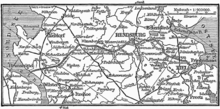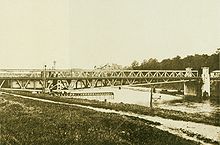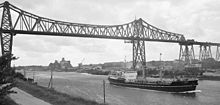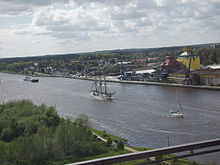
Initial planning for the construction of a waterway through Schleswig-Holstein supposedly dates back to the 7th Century and was driven by the intention to facilitate trade: Haithabu, located near today’s city of Schleswig, was one of Northern Europe’s centres of trade at the time. It though took several centuries until planning turned into reality – eventually driven by strategic and military concerns rather more than the will to support trade. The first connection between the North and Baltic Seas was eventually completed in 1784 during the reign of Christian VII of Denmark. Called the ‘Eider-Canal’, this artificially-built 43 kilometres long canal formed part of a 175 kilometres waterway from Kiel to the Eider River’s mouth at Tönning on the Schleswig-Holstein west coast. It was only 29 metres (95 ft) wide with a depth of three metres (ten feet), which limited the size vessels that could use it to 300 tdw.
During the 19th century, after Schleswig-Holstein had come under the government of Prussia (from 1871 the German Empire) following the Second Schleswig War in 1864. A combination of naval interests and commercial pressure eventually encouraged the development of a new canal. In June 1887 construction works started at Holtenau, near Kiel. The canal took over 9,000 workers eight years to build. On June 20, 1895 it was officially opened by Kaiser Wilhelm II for transiting from Brunsbüttel to Holtenau. The next day, a ceremony was held in Holtenau where Wilhelm II named it the Kaiser Wilhelm Kanal (after Kaiser Wilhelm I), and laid the final stone. As a waterway for naval and civil purposes Kiel Canal turned into an instant success. Planning of a major upgrade therefore started only ten years after the Canal had become operational, again with size requirements of the German Navy in mind. Between 1907 and 1914 the Canal was widened and its lock capacity significantly increased. The widening allowed the passage of a Dreadnought-sized battleship. This meant that these battleships could travel from the Baltic Sea to the North Sea without having to go around Denmark. The enlargement projects were completed by the installation of two larger canal locks in Brunsbüttel and Holtenau.
After World War I, the Treaty of Versailles internationalised the Canal while leaving it under German administration. Respective regulations still apply today. The Nazi regime repudiated the Canal’s international status in 1936. After the end of World War II the Canal again became open to all traffic. During the following decades it saw an in-depth change of traffic: Ship sizes increased significantly. The Canal’s upgrade continued, yet with an increasingly reduced speed. Discussion about the need for an extensive upgrade started in the 1990s, but various German federal governments failed to provide the necessary funds and planning resources.
As a result of this neglect failures and lock breakdowns started to happen more often. In 2012 and 2013 the Canal was severely affected by multiple lock gate failures. Ships encountered long waiting times; in March 2013 vessels extending 125 metres overall length had to be deviated via the Skagerrak for some time. These obvious impacts resulting from a continued lack of investment eventually brought the Kiel Canal issue into the public focus on national level in Germany. In April 2014 funds for the construction of the fifth lock chamber in Brunsbüttel were eventually released by the competent Committee under the German parliament. This paved the way for a rapid assignment of building contracts and thus the construction of the much-required fifth lock chamber.
Text compiled using material from Wikipedia.



